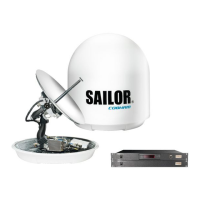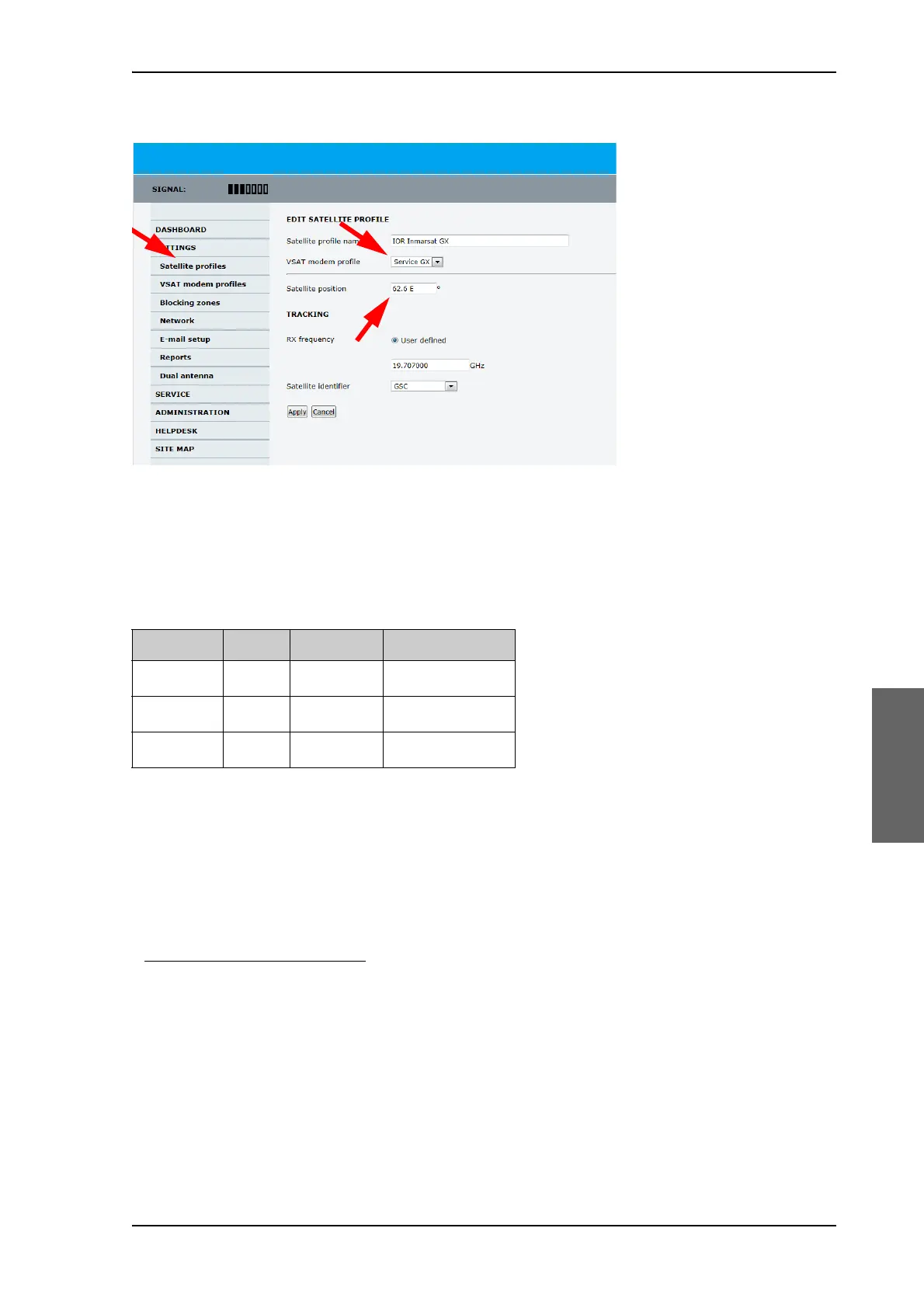Calibration
99-145912-A Chapter 6: Configuration 6-5
7. Enter the data for the satellite that you want to use as a calibration
reference. Note the following calibration requirements:
Elevation angle: 5 – 70 degrees.
Not allowed for calibration: Inclined orbit.
Satellite identifier: GSC, NID, Orbital position (DVB-S, DVB-S2)
1
8. Click Apply to save the settings for this satellite profile for
calibration. The system is ready for the azimuth and cable calibration.
Figure 6-4: Service profile for calibration
1. Use Orbital position and NID if you want to use NID or orbital position or
other KA band satellites with DVB-S2 support. The DVB symbol rate
must be >5 Ms/s. For NID use preferably a unique NID (ONID). An
azimuth calibration without NID can be useful in regions where the
satellite operators do not broadcast NID (US, China, Australia etc.). For
NID=0 the NID is not used when checking the satellite link. For NID 1 to
65535 the supplied NID is matched against the Network ID broadcast by
the satellite. For orbital position the supplied longitude is matched with
the orbital position broadcast by the satellite. Not all service providers
broadcast the orbital position.
Satellite Position Frequency Satellite identifier
IOR 62.6 E 19.707 GHz GSC
POR 144 E N/A
a
a. Expected to be active in 2016.
GSC
AOR 55 W N/A
a
GSC
Table 6-1: Inmarsat GSC satellite information

